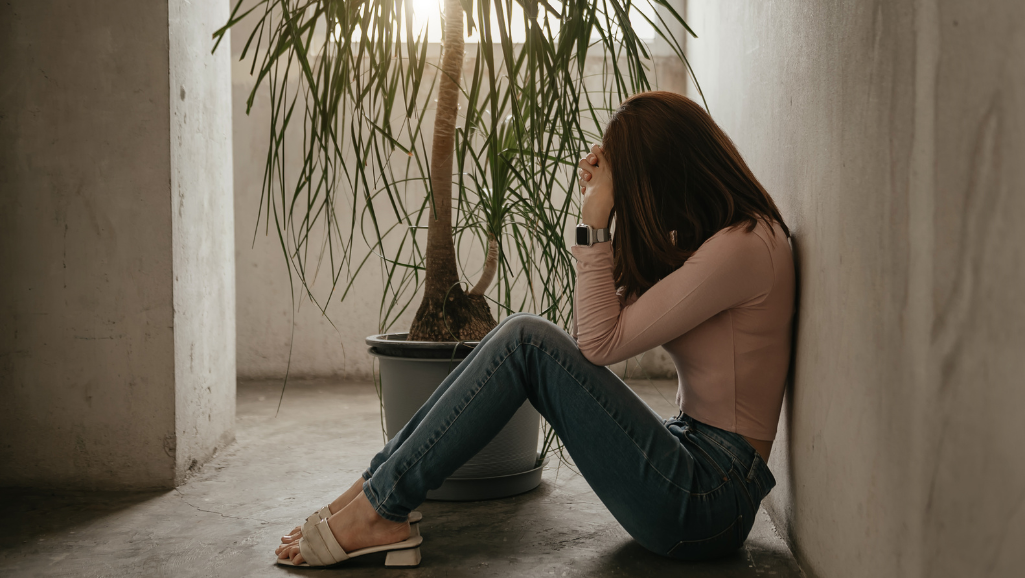Mental health plays a huge role in our daily lives, yet many struggle to recognize the signs of common conditions. Stress, anxiety, and depression often overlap, making it hard to tell them apart. Knowing the distinctions can help in finding the right support and treatment.
Nearly 60% of people with anxiety also experience depression, showing how closely these feelings connect. Genetics, brain chemistry, and past trauma can influence these conditions. But there’s hope—effective treatments like therapy and lifestyle changes can make a big difference.
This guide will help you recognize symptoms and take steps toward better well-being. Whether you’re dealing with overwhelming emotions or supporting someone else, understanding is the first step to healing.
Key Takeaways
- difference between stress and anxiety and depression.
- Recognizing symptoms early improves mental health outcomes.
- Anxiety and depression often occur together.
- Genetics and life experiences influence these conditions.
- Therapy and lifestyle changes offer effective solutions.
- Understanding leads to better support and recovery.
Understanding Stress, Anxiety, and Depression
Recognizing the nuances of mental health conditions helps in addressing them effectively. While stress is a natural reaction to challenges, anxiety and depression are persistent disorders that need careful attention. Let’s break them down.
Stress: A Temporary Response
Stress flares up during deadlines or life changes but fades once the situation resolves. It’s your body’s alarm system. However, chronic stress can spiral into more severe conditions if ignored.
Anxiety Disorders: Beyond Everyday Worry
Anxiety disorders, like generalized anxiety or PTSD, involve intense fear that disrupts daily life. Symptoms include:
- Panic attacks (racing heart, sweating)
- Irrational dread of social interactions
- Flashbacks from past trauma
Nearly 50% of people with depression also battle anxiety, creating a cycle where each condition fuels the other.
Depression: The Weight of Hopelessness
Depression isn’t just sadness—it’s a lingering emptiness. Key signs include:
- Loss of interest in hobbies
- Fatigue or insomnia
- Feelings of worthlessness
For a clinical diagnosis, these symptoms must last two weeks or longer. Anxiety and depression often overlap, making tailored treatment essential.
Understanding these distinctions empowers you to seek the right help. Whether it’s therapy, medication, or lifestyle shifts, recovery starts with clarity.
Key Symptoms of Stress, Anxiety, and Depression
Your body and mind send signals when something feels off—learning to read them is key. While some symptoms overlap, each condition has distinct markers. Here’s how to spot them.
When Stress Takes Over
Stress often shows up physically. You might notice headaches, muscle tension, or a racing heart. Emotionally, irritability and worry creep in, especially under pressure.
Sleep troubles are common—either too much or too little. Appetite swings and trouble focusing are red flags. Chronic stress can weaken your immune system, making you sick more often.
The Grip of Anxiety
Anxiety goes beyond everyday nerves. Panic attacks hit suddenly, with chest pain or dizziness. Restlessness and digestive issues like nausea may linger.
Your mind might race with “what-if” thoughts. Avoidance of social situations or obsessive habits can disrupt daily life. Unlike stress, these symptoms persist even without a clear trigger.
Depression’s Heavy Shadow
Depression drains joy. A deep sadness lingers for weeks, and hobbies lose their spark. Fatigue weighs you down, even with enough sleep.
Concentration fades, and guilt or hopelessness sets in. Some people feel angry or numb. Changes in weight or energy levels often accompany these emotional shifts.
“Persistent symptoms lasting two weeks or more warrant professional help—early action improves outcomes.”
Noticing these signs? You’re already stepping toward healing. Whether it’s stress, anxiety, or depression, support is within reach.
Difference Between Stress and Anxiety and Depression
Mental well-being isn’t one-size-fits-all—each condition has its own rhythm. While they share similarities, their differences shape how we cope and heal.
Stress acts like a storm—intense but passing. Work deadlines or traffic jams trigger it, but relief comes once the cause fades. Anxiety, however, lingers like a shadow. It’s a high-energy state, with relentless “what-ifs” and physical restlessness.
Depression flips the script. It drains motivation, leaving emptiness where joy once lived. Unlike anxiety’s racing thoughts, depression slows everything down. Untreated anxiety often fuels this cycle, as avoidance behaviors isolate and deepen sadness.
“Anxiety is like a revving engine; depression is running on empty. Both need care, but in distinct ways.”
For example, work stress ends after the project. Generalized anxiety, a disorder, means constant dread without a clear trigger. Spotting these differences helps tailor support—whether it’s therapy for anxiety depression overlap or stress-management techniques.
Key contrasts:
- Stress anxiety: Temporary vs. persistent.
- Energy: Anxiety spikes it; depression depletes it.
- Impact: Anxiety avoids; depression withdraws.
Recognizing these patterns empowers better choices. Small steps, like talking to a professional, can redirect the path toward light.
When Stress, Anxiety, and Depression Overlap
The lines between mental health conditions often blur, creating complex challenges. Nearly 50% of people with major depression also battle severe anxiety disorders, weaving a web of shared symptoms and struggles.
Panic attacks in depression create a rollercoaster of energy. One moment, racing thoughts and a pounding heart dominate. The next, crushing fatigue takes over. This “high-low” cycle drains resilience.
Avoidance behaviors—like skipping social events—feed the cycle. Isolation deepens sadness, while untreated depression anxiety fuels more avoidance. Trauma compounds this, often triggering both PTSD and depressive episodes.
“Shared brain structures and genetics explain why 58% with depression also meet criteria for anxiety disorders.”
Chronic stress worsens the overlap. It disrupts work, relationships, and daily life. Yet hope exists: 60% see improvement with combined therapy and medication. Dual diagnosis is key—tailored treatment addresses both conditions at once.
Recognizing these intertwined problems empowers action. Small steps, like consulting a specialist, can untangle the knots and light the path forward.
Treatment Options for Managing Symptoms
Finding the right path to mental wellness starts with understanding your options. From professional therapy to carefully prescribed medication, modern approaches offer hope and tangible results. The key is tailoring solutions to your unique needs.
Therapy Approaches
Cognitive Behavioral Therapy (CBT) helps reframe negative thoughts, breaking cycles of worry. Studies show it reduces symptoms in 60% of cases within 12 weeks. Interpersonal therapy strengthens relationships, while mindfulness techniques build resilience.
Group sessions or one-on-one support provide safe spaces to heal. Many find relief through creative outlets like art or music therapy. Consistency matters—weekly sessions often yield the best outcomes.
Medication Options
SSRIs like Zoloft or SNRIs such as Cymbalta balance brain chemistry. Effects typically appear in 4–6 weeks. Bupropion suits some but may not address anxiety fully. Always discuss side effects with your doctor.
“Combining medication with therapy improves recovery rates by 40% compared to either alone.”
Adjuvants like yoga or omega-3 supplements can support clinical treatment. Track progress and adjust plans with your healthcare team. Remember—small steps lead to big changes.
Lifestyle Changes to Support Mental Health
Small daily habits can transform your mental well-being more than you realize. Simple changes to your diet, activities, and routines create a ripple effect—boosting mood, energy, and resilience.
The Mediterranean diet, rich in leafy greens and omega-3s, stabilizes mood. Swap caffeine and alcohol for herbal teas or infused water. These tweaks fuel your body without crashes or jitters.
Movement matters. A 30-minute walk sparks serotonin—nature’s antidepressant. Yoga or dancing also count. Consistency beats intensity; even small activities rewire your mind for calm.
“Sleep hygiene cuts stress hormones by 30%—unplugging before bed is as vital as brushing your teeth.”
Prioritize sleep with a dark, cool room and no screens after 9 PM. Journaling helps track triggers, while support groups connect you with others who understand. Progress starts one step at a time.
- Eat smart: Lean proteins, complex carbs, and hydration balance mood.
- Move daily: Aerobic exercise boosts self-esteem and focus.
- Rest deeply: Digital detoxes improve sleep quality.
Conclusion
Every journey toward better mental health starts with awareness. Recognizing symptoms early empowers you to seek the right support—whether through hotlines like 988 or trusted clinics.
Combining therapy with lifestyle shifts fosters lasting wellness. Small changes, like mindful movement or balanced meals, rebuild resilience. Progress isn’t linear, but each step counts.
Prioritize your well-being without shame. You deserve a life filled with hope and strength. Reach out, take action, and remember—light always follows the darkest moments.











